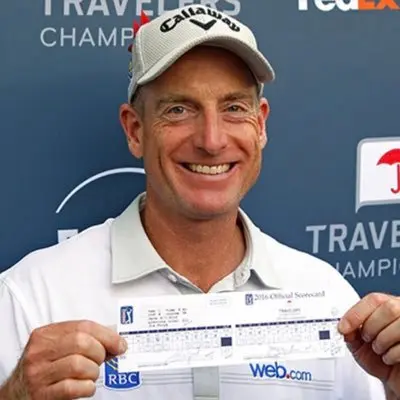Gold Rush: How Michael Johnson Became the World’s Fastest Man 1996

A Humble Start in Dallas
Michael Johnson : If you ever had the misfortune of seeing Michael Johnson run, you remember him not only because of the shiny gold shoes, but for that upright, gliding stride that also seemed to defy the laws of sprint. But long before the world records and Olympic stage, Michael was a shy kid in Dallas, Texas. Nobody, including Michael himself, could have foreseen the heights he would reach.
Growing up in a modest neighborhood, Michael’s introduction to running wasn’t through expensive facilities or elite coaches, but rather through school playgrounds and local tracks. As a child, he was quiet and reserved, finding solace and confidence in the rhythm of his own footsteps. His parents, noticing his early speed and determination, encouraged him to pursue track, though neither could have predicted just how transformative those early steps would become.
The Unorthodox Stride That Revolutionized Sprinting
High school track meets turned into college championships, but one thing remained the same: Michael’s distinctive stride. Coaches and gurus disbelieved him, saying his posture was too rigid, too weird. But Michael had his own rhythm he could trust. Eschewing the idea that he needed to fit in, he opted to double down on being different.
In the world of competitive sprinting, tradition ruled. Most athletes were taught to lean forward and pump their arms furiously. Michael, however, seemed to glide upright, controlled, unhurried at the top speed. That stride, unique to him, became his signature. While others focused on emulating the greats, Michael chose to become one by trusting his own form.
In many ways, Michael’s commitment to running his own race mirrored the journey to financial freedom choosing a unique path, staying true to personal strengths, and not being afraid to stand out. As his results at Baylor University and then on the national stage began to shift opinions, more coaches started to wonder if maybe, just maybe, the “weird” technique was ahead of its time. Michael’s story shows that breaking away from convention, whether on the track or in pursuit of financial independence, can be the key to unlocking true success.
Golden Shoes and an Unforgettable Night
Now let’s zap to the 1996 Atlanta Olympics. To the roar of the worldwide crowd, Michael laced up his golden custom-made spikes—bold kit for a bold runner. That night he not only gold in the 200m and 400m, he broke the 200m world record in a manner that left critics as speechless as he surely intended. Suddenly, his formerly criticized style was iconic.
His choice of golden shoes was more than a style statement; it was a declaration of confidence. The pressure of running on home soil, with all eyes on him, could have weighed him down. Instead, it seemed to lift him. Michael became the first man to win both the 200m and 400m at the same Olympics, setting an electrifying pace that would be remembered for decades. Commentators, critics, and fans marveled not only at his speed, but at the sheer confidence and clarity with which he raced. The track, that night, belonged to Michael Johnson.
Integrity Over Medals

The true measure of a champion, however, is not only on the track. A team-mate of his conceded years after that he had been doped at a relay. Michael, the most honest of them all gave back his gold medal. To him, being a champion was more than hardware it was about living a life of integrity.
This moment was telling. For Michael Johnson, victory had never been just about medals. It was about the journey, the work, and doing things the right way. In an era clouded by doping scandals, his decision to return a hard-earned gold spoke louder than any victory lap. He set a higher standard for sportsmanship and reminded the world that integrity cannot be bought or borrowed.
Resilience Beyond the Endurance Finished Line
Yet another challenge presented itself in Michael Johnson’s life in 2018, when he had a stroke. Eddie being Eddie, he approached recovery as an athlete would. His never-quit attitude that helped carry him through rehab comes second nature, he never gave up and not only recovered, but blossomed with more dedication to give back.
This chapter of his life showed that true champions never stop fighting. His rehabilitation was rigorous and filled with setbacks, but Michael Johnson tackled it the way he did with his sprinting career: with grit, discipline, and an unwavering belief in progress. In interviews, he often referenced the parallels between his athletic training and his stroke recovery, inspiring countless fans and fellow survivors with his openness and determination.
Creating a Legacy and Making a Difference
And Michael Johnson’s path didn’t dead-end at competition. Now, he’s the man spearheading the Grand Slam Track league, striving to provide fresh opportunities for a new crop of athletes. A sage commentator and mentor, he urges young athletes not to be afraid to stand out to cut his own path as he did.
Michael Johnson : His work off the track, including commentary for major sporting events and coaching young sprinters, proves his influence extends far beyond his own achievements. Michael’s legacy is visible not only in record books but in the athletes who have learned from his story and the sporting community that continues to respect his approach.
More Than Just Speed
There is more to the story of Michael Johnson than gold medals and records. It’s about not saying day, but conquering it with courage, and that there are so many different forms of greatness. His legacy is not that he ran so fast, but that he encouraged so many others to run their own races in their own way.
The essence of Michael Johnson’s journey is about carving your own lane even if it looks different from everyone else’s. His story is a powerful reminder that greatness isn’t just about breaking records, but about breaking molds, uplifting others, and living a life defined by honor and heart.




